
| SCYTHIANS
Scythian comb from Solokha, early 4th century BC
Pontic Steppe
Pontic Steppe
Eurasian Steppe The Scythians, also known as Scyth, Saka, Sakae, Iskuzai, or Askuzai, were a nomadic people who dominated the Pontic steppe from about the 7th century BC up until the 3rd century BC. They were part of the wider Scythian cultures, stretching across the Eurasian Steppe, which included many peoples that are distinguished from the Scythians. A broad concept referring to all early Eurasian nomads as "Scythians" has sometimes been used. Within this concept, the actual Scythians are variously referred to as Pontic Scythians. Use of the term "Scythians" for all early Eurasian nomads has, however, led to much confusion in literature, and the validity of such terminology is controversial. Other names for that concept are therefore preferable.
The Scythians are generally believed to have been of Iranian origin. They spoke a language of the Scythian branch of the Iranian languages, and practiced a variant of ancient Iranian religion. Among the earliest peoples to master mounted warfare, the Scythians replaced the Cimmerians as the dominant power on the Pontic Steppe in the 8th century BC. During this time they and related peoples came to dominate the entire Eurasian Steppe from the Carpathian Mountains in the west to Ordos Plateau in the east, creating what has been called the first Central Asian nomadic empire. Based in what is modern-day Ukraine and southern Russia, the Scythians called themselves Scoloti and were led by a nomadic warrior aristocracy known as the Royal Scythians.
In the 7th century BC, the Scythians crossed the Caucasus and frequently raided the Middle East along with the Cimmerians, playing an important role in the political developments of the region. Around 650–630 BC, Scythians briefly dominated the Medes of the western Iranian Plateau, stretching their power to the borders of Egypt.
After losing control over Media, the Scythians continued intervening in Middle Eastern affairs, playing a leading role in the destruction of the Assyrian Empire in the Sack of Nineveh in 612 BC. The Scythians subsequently engaged in frequent conflicts with the Achaemenid Empire. The Scythians suffered a major defeat against Macedonia in the 4th century BC and were subsequently gradually conquered by the Sarmatians, a related Iranian people living to their east. In the late 2nd century BC, their capital at Scythian Neapolis in the Crimea was captured by Mithridates VI and their territories incorporated into the Bosporan Kingdom. By this time they had been largely Hellenized.
By the 3rd century AD, the Sarmatians and last remnants of the Scythians were dominated by the Alans, and were being overwhelmed by the Goths. By the early Middle Ages, the Scythians and the Sarmatians had been largely assimilated and absorbed by early Slavs. The Scythians were instrumental in the ethnogenesis of the Ossetians, who are believed to be descended from the Alans.
The Scythians played an important part in the Silk Road, a vast trade network connecting Greece, Persia, India and China, perhaps contributing to the contemporary flourishing of those civilisations. Settled metalworkers made portable decorative objects for the Scythians, forming a history of Scythian metalworking. These objects survive mainly in metal, forming a distinctive Scythian art.
The name of the Scythians survived in the region of Scythia. Early authors continued to use the term "Scythian", applying it to many groups unrelated to the original Scythians, such as Huns, Goths, Türks, Avars, Khazars, and other unnamed nomads. The scientific study of the Scythians is called Scythology.
Names
:
Ethnonyms
:
Modern
terminology :
The Scythians share several cultural similarities with other populations living to their east, in particular similar weapons, horse gear and Scythian art, which has been referred to as the Scythian triad. Cultures sharing these characteristics have often been referred to as Scythian cultures, and its peoples called Scythians. Peoples associated with Scythian cultures include not only the Scythians themselves, who were a distinct ethnic group, but also Cimmerians, Massagetae, Saka, Sarmatians and various obscure peoples of the forest steppe, such as early Slavs, Balts and Finno-Ugric peoples. Within this broad definition of the term Scythian, the actual Scythians have often been distinguished from other groups through the terms Classical Scythians, Western Scythians, European Scythians or Pontic Scythians.
Scythologist Askold Ivantchik notes with dismay that the term "Scythian" has been used within both a broad and a narrow context, leading to a good deal of confusion. He reserves the term "Scythian" for the Iranian people dominating the Pontic steppe from the 7th century BC to the 3rd century BC. Nicola Di Cosmo writes that the broad concept of "Scythian" is "too broad to be viable", and that the term "early nomadic" is preferable.
History
:
The 5th-century BC Greek historian Herodotus is the most important literary source on the origins of the Scythians The Scythians first appeared in the historical record in the 8th century BC. Herodotus reported three contradictory versions as to the origins of the Scythians, but placed greatest faith in this version :
There is also another different story, now to be related, in which I am more inclined to put faith than in any other. It is that the wandering Scythians once dwelt in Asia, and there warred with the Massagetae, but with ill success; they therefore quitted their homes, crossed the Araxes, and entered the land of Cimmeria.
Herodotus presented four different versions of Scythian origins :
1.
Firstly (4.7), the Scythians' legend about themselves, which portrays
the first Scythian king, Targitaus, as the child of the sky-god
and of a daughter of the Dnieper. Targitaus allegedly lived a thousand
years before the failed Persian invasion of Scythia, or around 1500
BC. He had three sons, before whom fell from the sky a set of four
golden implements—a plough, a yoke, a cup and a battle-axe.
Only the youngest son succeeded in touching the golden implements
without them bursting with fire, and this son's descendants, called
by Herodotus the "Royal Scythians", continued to guard
them.
Archaeological
evidence :
The first hypothesis, formerly more espoused by Soviet and then Russian researchers, roughly followed Herodotus' (third) account, holding that the Scythians were an Eastern Iranian-speaking group who arrived from Inner Asia, i.e. from the area of Turkestan and western Siberia.
The second hypothesis, according to Roman Ghirshman and others, proposes that the Scythian cultural complex emerged from local groups of the Srubna culture at the Black Sea coast, although this is also associated with the Cimmerians. According to Pavel Dolukhanov this proposal is supported by anthropological evidence which has found that Scythian skulls are similar to preceding findings from the Srubna culture, and distinct from those of the Central Asian Saka. Yet, according to J. P. Mallory, the archaeological evidence is poor, and the Andronovo culture and "at least the eastern outliers of the Timber-grave culture" may be identified as Indo-Iranian.
Genetic evidence :
Yamna Culture In 2017, a genetic study of the Scythians suggested that the Scythians were ultimately descended from the Yamna culture, and emerged on the Pontic steppe independently of peoples belonging to Scythian cultures further east. Based on the analysis of mithocondrial lineages, another later 2017 study suggested that the Scythians were directly descended from the Srubnaya culture. A later analysis of paternal lineages, published in 2018, found significant genetic differences between the Srubnaya and the Scythians, suggesting that the Srubnaya and the Scythians instead traced a common origin in the Yamnaya culture, with the Scythians and related peoples such as the Sarmatians perhaps tracing their origin to the eastern Pontic-Caspian steppes and the southern Urals. Another 2019 study also concluded that migrations must have played a part in the emergence of the Scythians as the dominant power of the Pontic steppe.
Early history :
Gold Scythian belt title, Mingachevir (ancient Scythian kingdom), Azerbaijan, 7th century BC Herodotus provides the first detailed description of the Scythians. He classifies the Cimmerians as a distinct autochthonous tribe, expelled by the Scythians from the northern Black Sea coast (Hist. 4.11–12). Herodotus also states (4.6) that the Scythians consisted of the Auchatae, Catiaroi, Traspians, and Paralatae or "Royal Scythians".
In the early 7th century BC, the Scythians and Cimmerians are recorded in Assyrian texts as having conquered Urartu. In the 670s, the Scythians under their king Bartatua raided the territories of the Assyrian Empire. The Assyrian king Esarhaddon managed to make peace with the Scythians by marrying off his daughter to Bartatua and by paying a large amount of tribute. Bartatua was succeeded by his son Madius ca. 645 BC, after which they launched a great raid on Palestine and Egypt. Madius subsequently subjugated the Median Empire. During this time, Herodotus notes that the Scythians raided and exacted tribute from "the whole of Asia". In the 620s, Cyaxares, leader of the Medes, treacherously killed a large number of Scythian chieftains at a feast. The Scythians were subsequently driven back to the steppe. In 612 BC, the Medes and Scythians participated in the destruction of the Assyrian Empire at the Battle of Nineveh. During this period of incursions into the Middle East, the Scythians became heavily influenced by the local civilizations.
In the 6th century BC, the Greeks had begun establishing settlements along the coasts and rivers of the Pontic steppe, coming in contact with the Scythians. Relations between the Greeks and the Scythians appear to have been peaceful, with the Scythians being substantially influenced by the Greeks, although the city of the Panticapaeum might have been destroyed by the Scythians in the mid-century BC. During this time, the Scythian philosopher Anacharsis traveled to Athens, where he made a great impression on the local people with his "barbarian wisdom".
War with Persia :
Reliefs
depicting the soldiers of the Achaemenid army, Xerxes I tomb, circa
480 BCE. The Achaemenids referred to all nomads to their north as
Saka, and divided them into three categories: The Saka tayai paradraya
("beyond the sea", presumably the Scythians), the Saka
tigraxauda ("with pointed caps"), and the Saka haumavarga
("Hauma drinkers", furthest East).
Unable to receive support from neighboring nomadic peoples against the Persians, the Scythians evacuated their civilians and livestock to the north and adopted a scorched earth strategy (the act of an army destroying everything in an area such as food, buildings, or equipment that could be useful to an enemy), while simultaneously harassing the extensive Persian supply lines.
Suffering heavy losses, the Persians reached as far as the Sea of Azov, until Darius was compelled to enter into negotiations with Idanthyrsus, which, however, broke down. Darius and his army eventually reatreated across the Danube back into Persia, and the Scythians thereafter earned a reputation of invincibility among neighboring peoples.
Golden
Age :
The Scythian offensive against the Thracians was checked by the Odrysian kingdom. The border between the Scythians and the Odrysian kingdom was thereafter set at the Danube, and relations between the two dynasties were good, with dynastic marriages frequently occurring. The Scythians also expanded towards the north-west, where they destroyed numerous fortified settlements and probably subjucated numerous settled populations. A similar fate was suffered by the Greek cities of the northwestern Black Sea coast and parts of the Crimea, over which the Scythians established political control. Greek settlements along the Don River also came under the control of the Scythians.
A division of responsibility developed, with the Scythians holding the political and military power, the urban population carrying out trade, and the local sedentary population carrying out manual labor. Their territories grew grain, and shipped wheat, flocks, and cheese to Greece. The Scythians apparently obtained much of their wealth from their control over the slave trade from the north to Greece through the Greek Black Sea colonial ports of Olbia, Chersonesos, Cimmerian Bosporus, and Gorgippia.
When Herodotus wrote his Histories in the 5th century BC, Greeks distinguished Scythia Minor, in present-day Romania and Bulgaria, from a Greater Scythia that extended eastwards for a 20-day ride from the Danube River, across the steppes of today's East Ukraine to the lower Don basin.
Scythian offensives against the Greek colonies of the northeastern Black Sea coast were largely unsuccessful, as the Greeks united under the leadership of the city of Panticapaeum and put up a vigorous defence. These Greek cities developed into the Bosporan Kingdom. Meanwhile, several Greek colonies formerly under Scythian control began to reassert their independence. It is possible that the Scythians were suffering from internal troubles during this time. By the mid-4th century BC, the Sarmatians, a related Iranian people living to the east of the Scythians, began expanding into Scythian territory.
Scythian king Skilurus, relief from Scythian Neapolis, Crimea, 2nd century BC The 4th century BC was a flowering of Scythian culture. The Scythian king Ateas managed to unite under his power the Scythian tribes living between the Maeotian marshes and the Danube, while simultaneously enroaching upon the Thracians. He conquered territories along the Danube as far the Sava river and established a trade route from the Black Sea to the Adriatic, which enabled a flourishing of trade in the Scythian kingdom. The westward expansion of Ateas brought him into conflict with Philip II of Macedon (reigned 359 to 336 BC), with whom he had previously been allied, who took military action against the Scythians in 339 BC. Ateas died in battle, and his empire disintegrated. Philip's son, Alexander the Great, continued the conflict with the Scythians. In 331 BC, his general Zopyrion invaded Scythian territory with a force of 30,000 men, but was routed and killed by the Scythians near Olbia.
Decline
:
By the early 3rd century BC, the Scythian culture of the Pontic steppe suddenly disappears. The reasons for this are controversial, but the expansion of the Sarmatians certainly played a role. The Scythians in turn shifted their focus towards the Greek cities of the Crimea.
The territory of the Scythae Basilaei ("Royal Scyths") along the north shore of the Black Sea around 125 AD By around 200 BC, the Scythians had largely withdrawn into the Crimea. By the time of Strabo's account (the first decades AD), the Crimean Scythians had created a new kingdom extending from the lower Dnieper to the Crimea, centered at Scythian Neapolis near modern Simferopol. They had become more settled and were intermingling with the local populations, in particular the Tauri, and were also subjected to Hellenization. They maintained close relations with the Bosporan Kingdom, with whose dynasty they were linked by marriage. A separate Scythian territory, known as Scythia Minor, existed in modern-day Dobruja, but was of little significance.
In the 2nd century BC, the Scythian kings Skilurus and Palakus sought to exent their control over the Greek cities of north of the Black Sea. The Greek cities of Chersonesus and Olbia in turn requested the aid Mithridates the Great, king of Pontus, whose general Diophantus defeated their armies in battle, took their capital and annexed their territory to the Bosporan Kingdom. After this time, the Scythians practically disappeared from history. Scythia Minor was also defeated by Mithridates.
In the years after the death of Mithridates, the Scythians had transitioned to a settled way of life and were assimilating into neighboring populations. They made a resurgence in the 1st century AD and laid siege to Chersonesos, who were obliged to seek help from the Roman Empire. The Scythians were in turn defeated by Roman commander Tiberius Plautius Silvanus Aelianus. By the 2nd century AD, archaeological evidence show that the Scythians had been largely assimilated by the Sarmatians and Alans. The capital city of the Scythians, Scythian Neapolis, was destroyed by migrating Goths in the mid-3rd century AD. In subsequent centuries, remaining Scythians and Sarmatians were largely assimilated by early Slavs. The Scythians and Sarmatians played an instrumental role in the ethnogenesis of the Ossetians, who are considered direct descendants of the Alans.
Archaeology :
Scythian defence line 339 BC reconstruction in Polgár, Hungary Archaeological remains of the Scythians include kurgan tombs (ranging from simple exemplars to elaborate "Royal kurgans" containing the "Scythian triad" of weapons, horse-harness, and Scythian-style wild-animal art), gold, silk, and animal sacrifices, in places also with suspected human sacrifices. Mummification techniques and permafrost have aided in the relative preservation of some remains. Scythian archaeology also examines the remains of cities and fortifications.
Scythian archaeology can be divided into three stages :
•
Early Scythian – from the mid-8th or the
late 7th century BC to about 500 BC
The period in the 8th and 7th centuries BC when the Cimmerians and Scythians raided the Near East are ascribed to the later stages of the Early Scythian culture. Examples of Early Scythian burials in the Near East include those of Norsuntepe and Imirler. Objects of Early Scythian type have been found in Urartian fortresses such as Teishebaini, Bastam and Ayanis-kale. Near Eastern influences are probably explained through objects made by Near Eastern craftsmen on behalf of Scythian chieftains.
An arm from the throne of a Scythian king, 7th century BC. Found at the Kerkemess kurgan, Krasnodar Krai in 1905. On exhibit at the Hermitage Museum Early Scythian culture is known primarily from its funerary sites, because the Scythians at this time were nomads without permanent settlements. The most important sites are located in the northwestern parts of Scythian territories in the forest steppes of the Dnieper, and the southeastern parts of Scythian territories in the North Caucasus. At this time it was common for the Scythians to be buried in the edges of their territories. Early Scythian sites are characterized by similar artifacts with minor local variations.
Kurgans from the Early Scythian culture have been discovered in the North Caucasus. Some if these are characterized by great wealth, and probably belonged royals of aristocrats. They contain not only the deceased, but also horses and even chariots. The burial rituals carried out in these kurgans correspond closely with those described by Herodotus. The greatest kurgans from the Early Scythian culture in the North Caucasus are found at Kelermesskaya, Novozavedennoe II (Ulsky Kurgans) and Kostromskaya. One kurgan at Ulsky was found measured at 15 metres in height and contained more than 400 horses. Kurgans from the 7th century BC, when the Scythians were raiding the Near East, typically contain objects of Near Eastern origin. Kurgans from the late 7th century, however, contain few Middle Eastern objects, but, rather, objects of Greek origin, pointing to increased contacts between the Scythians and Greek colonists.
Dnieper River Important Early Scythian sites have also been found in the forest steppes of the Dnieper. The most important of these finds is the Melgunov Kurgan. This kurgan contains several objects of Near Eastern origin so similar to those found at the kurgan in Kelermesskaya that they were probably made in the same workshop. Most of the Early Scythian sites in this area are situated along the banks of the Dnieper and its tributaries. The funerary rites of these sites are similar but not identical to those of the kurgans in the North Caucasus.
Important Early Scythian sites have also been discovered in the areas separating the North Caucasus and the forest steppes. These include the Krivorozhskii kurgan on the eastern banks of the Donets, and the Temir-gora kurgan in the Crimea. Both date to the 7th century BC and contain Greek imports. The Krivorozhskii also display Near Eastern influences.
The famous gold stag of Kostromskaya, Russia Apart from funerary sites, numerous settlements from the Early Scythian period have been discovered. Most of these settlements are located in the forest steppe zone and are non-fortified. The most important of these sites in the Dnieper area are Trakhtemirovo, Motroninskoe and Pastyrskoe. East of these, at the banks of the Vorskla River, a tributary of the Dnieper, lies the Bilsk settlement. Occupying an area of 4,400 hectares with an outer rampart at over 30 km, Bilsk is the largest settlement in the forest steppe zone. It has been tentatively identified by a team of archaeologists led by Boris Shramko as the site of Gelonus, the purported capital of Scythia.
Another important large settlement can be found at Myriv. Dating from the 7th and 6th centuries BC, Myriv contains a significant amount of imported Greek objects, testifying to lively contacts with Borysthenes, the first Greek colony established on the Pontic steppe (ca. 625 BC). Within the ramparts in these settlements there were areas without buildings, which were probably occupied by nomadic Scythians seasonally visiting the sites.
The Early Scythian culture came to an end in the latter part of the 6th century BC.
Classical Scythian :
Distribution of Scythian kurgans and other sites along the Dnieper Rapids during the Classical Scythian period By the end of the 6th century BC, a new period begins in the material culture of the Scythians. Certain scholars consider this a new stage in the Scythian culture, while others consider it an entirely new archaeological culture. It is possible that this new culture arose through the settlement of a new wave of nomads from the east, who intermingled with the local Scythians. The Classical Scythian period saw major changes in Scythian material culture, both with regards to weapons and art style. This was largely through Greek influence. Other elements had probably been brought from the east.
Like in Early Scythian culture, the Classical Scythian culture is primarily represented through funerary sites. The area of distribution of these sites has, however, changed. Most of them, including the richest, are located on the Pontic steppe, in particular the area around the Dnieper Rapids.
At the end of the 6th century BC, new funerary rites appeared, characterized by more complex kurgans. This new style was rapidly adopted throughout Scythian territory. Like before, elite burials usually contained horses. A buried king was usually accompanied with multiple people from his entourage. Burials containing both males and females are quite common both in elite burials and in the burials of the common people.
The most important Scythian kurgans of the Classical Scythian culture in the 6th and 5th centuries BC are Ostraya Tomakovskaya Mogila, Zavadskaya Mogila 1, Novogrigor'evka 5, Baby and Raskopana Mogila in the Dnieper Rapids, and the Zolotoi and Kulakovskii kurgans in the Crimea.
The greatest, so-called "royal" kurgans of the Classical Scythian culture are dated to the 4th century BC. These include Solokha, Bol'shaya Cymbalka, Chertomlyk, Oguz, Alexandropol and Kozel. The second greatest, so-called "aristocratic" kurgans, include Berdyanskii, Tolstaya Mogila, Chmyreva Mogila, Five Brothers 8, Melitopolsky, Zheltokamenka and Krasnokutskii.
West side of the Kozel Kurgans Excavation at kurgan Sengileevskoe-2 found gold bowls with coatings indicating a strong opium beverage was used while cannabis was burning nearby. The gold bowls depicted scenes showing clothing and weapons.
By the time of Classical Scythian culture, the North Caucasus appears to no longer be under Scythian control. Rich kurgans in the North Caucasus have been found at the Seven Brothers Hillfort, Elizavetovka and Ulyap, but although they contain elements of Scythian culture, these probably belonged to an unrelated local population. Rich kurgans of the forest steppe zone from the 5th and 4th centuries BC have been discovered at places such as Ryzhanovka, but these are not as grand as the kurgans of the steppe further south.
Funerary sites with Scythian characteristics have also been discovered in several Greek cities. These include several unusually rich burials such as Kul-Oba (near Panticapaeum in the Crimea) and the necropolis of Nymphaion. The sites probably represent Scythian aristocrats who had close ties, if not family ties, with the elite of Nymphaion and aristocrats, perhaps even royals, of the Bosporan Kingdom.
In total, more than 3,000 Scythian funerary sites from the 4th century BC have been discovered on the Pontic steppe. This number far exceeds the number of all funerary sites from previous centuries.
Apart from funerary sites, remains of Scythian cities from this period have been discovered. These include both continuations from the Early Scythian period and newly founded settlements. The most important of these is the settlement of Kamenskoe on the Dniepr, which existed from the 5th century to the beginning of the 3rd century BC. It was a fortified settlement occupying an area of 12 square km. The chief occupation of its inhabitants appears to have been metalworking, and the city was probably an important supplier of metalwork for the nomadic Scythians. Part of the population was probably composed of agriculturalists. It is likely that Kamenskoe also served as a political center in Scythia. A significant part of Kamenskoe was not built up, perhaps to set it aside for the Scythian king and his entourage during their seasonal visits to the city. János Harmatta suggests that Kamenskoe served as a residence for the Scythian king Ateas.
By the 4th century, it appears that some of the Scythians were adopting an agricultural way of life similar to the peoples of the forest steppes. As a result, a number of fortified and non-fortified settlements spring up in the areas of the lower Dnieper. Part of the settled inhabitants of Olbia were also of Scythian origin.
Classical Scythian culture lasts until the late 4th century or early 3rd century BC.
Late Scythian :
Remains of Scythian Neapolis near modern-day Simferopol, Crimea. It served as a political center of the Scythians in the Late Scythian period The last period in the Scythian archaeological culture is the Late Scythian culture, which existed in the Crimea and the Lower Dnieper from the 3rd century BC. This area was at the time mostly settled by Scythians.
Archaeologically the Late Scythian culture has little in common with its predecessors. It represents a fusion of Scythian traditions with those of the Greek colonists and the Tauri, who inhabited the mountains of the Crimea. The population of the Late Scythian culture was mainly settled, and were engaged in stockbreeding and agriculture. They were also important traders, serving as intermediaries between the classical world and the barbarian world.
Recent excavations at Ak-Kaya/Vishennoe implies that this site was the political center of the Scythians in the 3rd century BC and the early part of the 2nd century BC. It was a well-protected fortress constructed in accordance with Greek principles.
The most important site of the Late Crimean culture is Scythian Neaoplis, which was located in Crimea and served as the capital of the Late Scythian kingdom from the early 2nd century BC to the beginning of the 3rd century AD. Scythian Neapolis was largely constructed in accordance with Greek principles. Its royal palace was destroyed by Diophantus, a general of the Pontic king Mithridates VI, at the end of the 2nd century BC, and was not rebuilt. The city nevertheless continued to exist as a major urban center. It underwent significant change from the 1st century to the 2nd century AD, eventually being left with virtually no buildings except from its fortifications. New funerary rites and material features also appear. It is probable that these changes represent the assimilation of the Scythians by the Sarmatians. A certain continuity is, however, observable. From the end of the 2nd century to the middle of the 3rd century AD, Scythian Neapolis transforms into a non-fortified settlement containing only a few buildings.
Apart from Scythian Neapolis and Ak-Kaya/Vishennoe, more than 100 fortified and non-fortified settlements from the Late Scythian culture have been discovered. They are often accompanied by a necropolis. Late Scythian sites are mostly found in areas around the foothills of the Crimean mountains and along the western coast of the Crimea. Some of these settlements had earlier been Greek settlements, such as Kalos Limen and Kerkinitis. Many of these coastal settlements served as trading ports.
The largest Scythian settlements after Neapolis and Ak-Kaya-Vishennoe were Bulganak, Ust-Alma and Kermen-Kyr. Like Neapolis and Ak-Kaya, these are characterized by a combination of Greek architectural principles and local ones.
A unique group of Late Scythian settlements were city-states located on the banks of the Lower Dnieper. The material culture of these settlements was even more Hellenized than those on the Crimea, and they were probably closely connected to Olbia, if not dependent it.
Burials of the Late Scythian culture can be divided into two kurgans and necropolises, with necropolises becoming more and more common as time progresses. The largest such necropolis has been found at Ust-Alma.
Because of close similarities between the material culture of the Late Scythians and that of neighbouring Greek cities, many scholars have suggested that Late Scythian cites, particularly those of the Lower Dnieper, were populated at last partly by Greeks. Influences of Sarmatian elements and the La Tène culture have been pointed out.
The Late Scythian culture ends in the 3rd century AD.
Culture and society :
Kurgan stelae of a Scythian at Khortytsia, Ukraine Since the Scythians did not have a written language, their non-material culture can only be pieced together through writings by non-Scythian authors, parallels found among other Iranian peoples, and archaeological evidence.
Tribal
divisions :
Herodotus relates that three main tribes of the Scythians descended from three sons of Targitaus: Lipoxais, Arpoxais, and Colaxais. They called themselves Scoloti, after one of their kings. Herodotus writes that the Auchatae tribe descended from Lipoxais, the Catiari and Traspians from Arpoxais, and the Paralatae (Royal Scythians) from Colaxais, who was the youngest brother. According to Herodotus the Royal Scythians were the largest and most powerful Scythian tribe, and looked "upon all the other tribes in the light of slaves."
Although scholars have traditionally treated the three tribes as geographically distinct, Georges Dumézil interpreted the divine gifts as the symbols of social occupations, illustrating his trifunctional vision of early Indo-European societies: the plough and yoke symbolised the farmers, the axe—the warriors, the bowl—the priests. The first scholar to compare the three strata of Scythian society to the Indian castes was Arthur Christensen. According to Dumézil, "the fruitless attempts of Arpoxais and Lipoxais, in contrast to the success of Colaxais, may explain why the highest strata was not that of farmers or magicians, but, rather, that of warriors."
Warfare :
Scythian
archers shooting with the Scythian bow, Kerch (ancient Panticapeum),
Crimea, 4th century BC. The Scythians were skilled archers, and
their style of archery influenced that of the Persians and subsequently
other nations, including the Greeks.
Scythians were particularly known for their equestrian skills, and their early use of composite bows shot from horseback. With great mobility, the Scythians could absorb the attacks of more cumbersome footsoldiers and cavalry, just retreating into the steppes. Such tactics wore down their enemies, making them easier to defeat. The Scythians were notoriously aggressive warriors. Ruled by small numbers of closely allied elites, Scythians had a reputation for their archers, and many gained employment as mercenaries. Scythian elites had kurgan tombs: high barrows heaped over chamber-tombs of larch wood, a deciduous conifer that may have had special significance as a tree of life-renewal, for it stands bare in winter.
The Ziwiye hoard, a treasure of gold and silver metalwork and ivory found near the town of Sakiz south of Lake Urmia and dated to between 680 and 625 BC, includes objects with Scythian "animal style" features. One silver dish from this find bears some inscriptions, as yet undeciphered and so possibly representing a form of Scythian writing.
Scythians also had a reputation for the use of barbed and poisoned arrows of several types, for a nomadic life centred on horses—"fed from horse-blood" according to Herodotus—and for skill in guerrilla warfare.
Some Scythian-Sarmatian cultures may have given rise to Greek stories of Amazons. Graves of armed females have been found in southern Ukraine and Russia. David Anthony notes, "About 20% of Scythian-Sarmatian 'warrior graves' on the lower Don and lower Volga contained females dressed for battle as if they were men, a style that may have inspired the Greek tales about the Amazons."
Metallurgy
:
Clothing :
Scythian warriors, drawn after figures on an electrum cup from the Kul-Oba kurgan burial near Kerch, Crimea. The warrior on the right strings his bow, bracing it behind his knee; note the typical pointed hood, long jacket with fur or fleece trimming at the edges, decorated trousers, and short boots tied at the ankle. Scythians apparently wore their hair long and loose, and all adult men apparently bearded. The gorytos appears clearly on the left hip of the bare-headed spearman. The shield of the central figure may be made of plain leather over a wooden or wicker base. (Hermitage Museum, St Petersburg)
According to Herodotus, Scythian costume consisted of padded and quilted leather trousers tucked into boots, and open tunics. They rode without stirrups or saddles, using only saddle-cloths. Herodotus reports that Scythians used cannabis, both to weave their clothing and to cleanse themselves in its smoke (Hist. 4.73–75); archaeology has confirmed the use of cannabis in funerary rituals. Men seemed to have worn a variety of soft headgear—either conical like the one described by Herodotus, or rounder, more like a Phrygian cap.
Costume has been regarded as one of the main identifying criteria for Scythians. Women wore a variety of different headdresses, some conical in shape others more like flattened cylinders, also adorned with metal (golden) plaques.
Scythian women wore long, loose robes, ornamented with metal plaques (gold). Women wore shawls, often richly decorated with metal (golden) plaques.
Based on numerous archeological findings in Ukraine, southern Russia, and Kazakhstan, men and warrior women wore long sleeve tunics that were always belted, often with richly ornamented belts.
Men and women wore long trousers, often adorned with metal plaques and often embroidered or adorned with felt appliqués; trousers could have been wider or tight fitting depending on the area. Materials used depended on the wealth, climate and necessity.
Men and women warriors wore variations of long and shorter boots, wool-leather-felt gaiter-boots and moccasin-like shoes. They were either of a laced or simple slip on type. Women wore also soft shoes with metal (gold) plaques.
Men and women wore belts. Warrior belts were made of leather, often with gold or other metal adornments and had many attached leather thongs for fastening of the owner's gorytos, sword, whet stone, whip etc. Belts were fastened with metal or horn belt-hooks, leather thongs and metal (often golden) or horn belt-plates.
Religion
:
Our most important literary source on Scythian religion is Herodotus. According to him the leading deity in the Scythian pantheon was Tabiti, whom he compared to the Greek god Hestia. Tabiti was eventually replaced by Atar, the fire-pantheon of Iranian tribes, and Agni, the fire deity of Indo-Aryans. Other deities mentioned by Herodotus include Papaios, Api, Goitosyros/Oitosyros, Argimpasa and Thagimasadas, whom he identified with Zeus, Gaia, Apollo, Aphrodite and Poseidon, respectively. The Scythians are also said by Herodotus to have worshipped equivalents of Heracles and Ares, but he does not mention their Scythian names. An additional Scythian deity, the goddess Dithagoia, is mentioned in the a dedication by Senamotis, daughter of King Skiluros, at Panticapaeum. Most of the names of Scythian deities can be traced back to Iranian roots.
Herodotus states that Thagimasadas was worshipped by the Royal Scythians only, while the remaining deities were worshipped by all. He also states that "Ares", the god of war, was the only god to whom the Scythians dedicated statues, altars or temples. Tumuli were erected to him in every Scythian district, and both animal sacrifices and human sacrifices were performed in honor of him. At least one shrine to "Ares" has been discovered by archaeologists.
The Scythians had professional priests, but it is not known if they constituted a hereditary class. Among the priests there was a separate group, the Enarei, who worshipped the goddess Argimpasa and assumed feminine identities.
Scythian mythology gave much importance to myth of the "First Man", who was considered the ancestor of them and their kings. Similar myths are common among other Iranian peoples. Considerable importance was given to the division of Scythian society into three hereditary classes, which consisted of warriors, priests and producers. Kings were considered part of the warrior class. Royal power was considered holy and of solar and heavenly origin. The Iranian principle of royal charisma, known as khvarenah in the Avesta, played a prominent role in Scythian society. It is probable that the Scythians had a number of epic legends, which were possibly the source for Herodotus' writings on them. Traces of these epics can be found in the epics of the Ossetians of the present day.
In Scythian cosmology the world was divided into three parts, with the warriors, considered part of the upper world, the priests of the middle level, and the producers of the lower one.
Art :
Gold
pectoral, or neckpiece, from a royal kurgan in Tolstaya Mogila,
Pokrov, Ukraine, dated to the second half of the 4th century BC,
of Greek workmanship. The central lower tier shows three horses,
each being torn apart by two griffins. Scythian art was especially
focused on animal figures.
Scythian animal style appears in an already established form Eastern Europe in the 8th century BC along with the Early Scythian archaeological culture itself. It bears little resemblance to the art of pre-Scythian cultures of the area. Some scholars suggest the art style developed under Near Eastern influence during the military campaigns of the 7th century BC, but the more common theory is that it developed on the eastern part of the Eurasian Steppe under Chinese influence. Others have sought to reconcile the two theories, suggesting that the animal style of the west and eastern parts of the steppe developed independently of each other, under Near Eastern and Chinese influences, respectively. Regardless, the animal style art of the Scythians differs considerable from that of peoples living further east.
Scythian animal style works are typically divided into birds, ungulates and beasts of prey. This probably reflects the tripatriate division of the Scythian cosmos, with birds belonging to the upper level, ungulates to the middle level and beasts of prey in the lower level.
Images of mythological creatures such a griffins are not uncommon in Scythian animal style, but these are probably the result of Near Eastern influences. By the late 6th century, as Scythian activity in the Near East was reduced, depictions of mythological creatures largely disappears from Scythian art. It, however, reappears again in the 4th century BC as a result of Greek influence.
Anthropomorphic depictions in Early Scythian art is known only from kurgan stelae. These depict warriors with almond-shaped eyes and mustaches, often including weapons and other military equipment.
Since the 5th century BC, Scythian art changed considerably. This was probably a result of Greek and Persian influence, and possibly also internal developments caused by an arrival of a new nomadic people from the east. The changes are notable in the more realistic depictions of animals, who are now often depicted fighting each other rather than being depicted individually. Kurgan stelae of the time also display traces of Greek influences, with warriors being depicted with rounder eyes and full beards.
The 4th century BC show additional Greek influence. While animal style was still in use, it appears that much Scythian art by this point was being made by Greek craftsmen on behalf of Scythians. Such objects are frequently found in royal Scythian burials of the period. Depictions of human beings become more prevalent. Many objects of Scythian art made by Greeks are probably illustrations of Scythian legends. Several objects are believed to have been of religious significance.
By the late 3rd century BC, original Scythian art disappears through ongoing Hellenization. The creation of anthropomorphic gravestones continued, however.
Works of Scythian art are held at many museums and has been featured at many exhibitions. The largest collections of Scythian art are found at the Hermitage Museum in Saint Petersburg and the Museum of Historical Treasures of the Ukraine in Kyiv, while smaller collections are found at the Staatliche Antikensammlungen in Berlin, the Ashmolean Museum of Oxford, and the Louvre of Paris.
Language :
The Scythians spoke a language belonging to the Scythian languages, most probably a branch of the Eastern Iranian languages. Whether all the peoples included in the "Scytho-Siberian" archaeological culture spoke languages from this family is uncertain.
The Scythian languages may have formed a dialect continuum: "Scytho-Sarmatian" in the west and "Scytho-Khotanese" or Saka in the east. The Scythian languages were mostly marginalised and assimilated as a consequence of the late antiquity and early Middle Ages Slavic and Turkic expansion. The western (Sarmatian) group of ancient Scythian survived as the medieval language of the Alans and eventually gave rise to the modern Ossetian language.
Anthropology
:
Physical appearance :
An Attic vase-painting of a Scythian archer (a police force in Athens) by Epiktetos, 520–500 BC In artworks, the Scythians are portrayed exhibiting Caucasoid traits. In Histories, the 5th-century Greek historian Herodotus describes the Budini of Scythia as red-haired and grey-eyed. In the 5th century BC, Greek physician Hippocrates argued that the Scythians were light skinned. In the 3rd century BC, the Greek poet Callimachus described the Arismapes (Arimaspi) of Scythia as fair-haired. The 2nd-century BC Han Chinese envoy Zhang Qian described the Sai (Saka), an eastern people closely related to the Scythians, as having yellow (probably meaning hazel or green) and blue eyes. In Natural History, the 1st-century AD Roman author Pliny the Elder characterises the Seres, sometimes identified as Saka or Tocharians, as red-haired, blue-eyed and unusually tall. In the late 2nd century AD, the Christian theologian Clement of Alexandria says that the Scythians and the Celts and long auburn hair.
The 2nd-century Greek philosopher Polemon includes the Scythians among the northern peoples characterised by red hair and blue-grey eyes. In the late 2nd or early 3rd century AD, the Greek physician Galen writes that Scythians, Sarmatians, Illyrians, Germanic peoples and other northern peoples have reddish hair. The fourth-century Roman historian Ammianus Marcellinus wrote that the Alans, a people closely related to the Scythians, were tall, blond and light-eyed. The fourth-century bishop Gregory of Nyssa wrote that the Scythians were fair skinned and blond haired. The 5th-century physician Adamantius, who often follows Polemon, describes the Scythians are fair-haired. It is possible that the later physical descriptions by Adamantius and Gregory of Scythians refer to East Germanic tribes, as the latter were frequently referred to as "Scythians" in Roman sources at that time.
Genetics
:
Another 2017 genetic study, published in Scientific Reports, found that the Scythians shared common mithocondrial lineages with the earlier Srubnaya culture. It also noted that the Scythians differed from materially similar groups further east by the absence of east Eurasian mitochondrial lineages. The authors of the study suggested that the Srubnaya culture was the source of the Scythian cultures of at least the Pontic steppe.
Srubnaya Culture In 2018, a genetic study of the earlier Srubnaya culture, and later peoples of the Scythian cultures, including the Scythians, was published in Science Advances. Members of the Srubnaya culture were found to be exclusively carriers of haplogroup R1a1a1 (R1a-M417), which showed a major expansion during the Bronze Age. Six male Scythian samples from kurgans at Starosillya and Glinoe were successfully analyzed. These were found to be carriers of haplogroup R1b1a1a2 (R1b-M269). The Scythians were found to be closely related to the Afanasievo culture and the Andronovo culture. The authors of the study suggested that the Scythians were not directly descended from the Srubnaya culture, but that the Scythians and the Srubnaya shared a common origin through the earlier Yamnaya culture. Significant genetic differences were found between the Scythians and materially similar groups further east, which underpinned the notion that although materially similar, the Scythians and groups further east should be seen as separate peoples belonging to a common cultural horizon, which perhaps had its source on the eastern Pontic-Caspian steppe and the southern Urals.
In 2019, a genetic study of remains from the Aldy-Bel culture of southern Siberia, which is materially similar to that of the Scythians, was published in Human Genetics. The majority of Aldy-Bel samples were found to be carriers of haplogroup R1a, including two carriers of haplogroup R1a1a1b2 (R1a-Z93). East Asian admixture was also detected. The results indicated that the Scythians and the Aldy-Bel people were of completely different paternal origins, with almost no paternal gene flow between them.
In 2019, a genetic study of various peoples belonging to the Scythian cultures, including the Scythians, was published in Current Biology. The Scythians remains were mostly found to be carriers of haplogroup R1a and various subclades of it. The authors of the study suggested that migrations must have played a role in the emergence of the Scythians as the dominant power on the Pontic steppe.
Legacy
:
Byzantine sources also refer to the Rus' raiders who attacked Constantinople circa 860 in contemporary accounts as "Tauroscythians", because of their geographical origin, and despite their lack of any ethnic relation to Scythians. Patriarch Photius may have first applied the term to them during the siege of Constantinople.
Early Modern usage :
Scythians at the Tomb of Ovid (c. 1640), by Johann Heinrich Schönfeld Owing to their reputation as established by Greek historians, the Scythians long served as the epitome of savagery and barbarism.
The New Testament includes a single reference to Scythians in Colossians 3:11: in a letter ascribed to Paul, "Scythian" is used as an example of people whom some label pejoratively, but who are, in Christ, acceptable to God :
Here there is no Greek or Jew. There is no difference between those who are circumcised and those who are not. There is no rude outsider, or even a Scythian. There is no slave or free person. But Christ is everything. And he is in everything.
Shakespeare, for instance, alluded to the legend that Scythians ate their children in his play King Lear :
The barbarous Scythian
Or he that makes his generation messes
Characteristically, early modern English discourse on Ireland, such as that of William Camden and Edmund Spenser, frequently resorted to comparisons with Scythians in order to confirm that the indigenous population of Ireland descended from these ancient "bogeymen", and showed themselves as barbaric as their alleged ancestors.
Romantic nationalism: Battle between the Scythians and the Slavs (Viktor Vasnetsov, 1881) Descent claims :
Eugène Delacroix's painting of the Roman poet, Ovid, in exile among the Scythians Some legends of the Poles, the Picts, the Gaels, the Hungarians, among others, also include mention of Scythian origins. Some writers claim that Scythians figured in the formation of the empire of the Medes and likewise of Caucasian Albania.
The Scythians also feature in some national origin-legends of the Celts. In the second paragraph of the 1320 Declaration of Arbroath, the élite of Scotland claim Scythia as a former homeland of the Scots. According to the 11th-century Lebor Gabála Érenn (The Book of the Taking of Ireland), the 14th-century Auraicept na n-Éces and other Irish folklore, the Irish originated in Scythia and were descendants of Fénius Farsaid, a Scythian prince who created the Ogham alphabet.
The Carolingian kings of the Franks traced Merovingian ancestry to the Germanic tribe of the Sicambri. Gregory of Tours documents in his History of the Franks that when Clovis was baptised, he was referred to as a Sicamber with the words "Mitis depone colla, Sicamber, adora quod incendisti, incendi quod adorasti." The Chronicle of Fredegar in turn reveals that the Franks believed the Sicambri to be a tribe of Scythian or Cimmerian descent, who had changed their name to Franks in honour of their chieftain Franco in 11 BC.
In the 17th and 18th centuries, foreigners regarded the Russians as descendants of Scythians. It became conventional to refer to Russians as Scythians in 18th-century poetry, and Alexander Blok drew on this tradition sarcastically in his last major poem, The Scythians (1920). In the 19th century, romantic revisionists in the West transformed the "barbarian" Scyths of literature into the wild and free, hardy and democratic ancestors of all blond Indo-Europeans.
Based on such accounts of Scythian founders of certain Germanic as well as Celtic tribes, British historiography in the British Empire period such as Sharon Turner in his History of the Anglo-Saxons, made them the ancestors of the Anglo-Saxons.
The idea was taken up in the British Israelism of John Wilson, who adopted and promoted the idea that the "European Race, in particular the Anglo-Saxons, were descended from certain Scythian tribes, and these Scythian tribes (as many had previously stated from the Middle Ages onward) were in turn descended from the Ten Lost Tribes of Israel." Tudor Parfitt, author of The Lost Tribes of Israel and Professor of Modern Jewish Studies, points out that the proof cited by adherents of British Israelism is "of a feeble composition even by the low standards of the genre."
Related
ancient peoples :
•
Abii
• Gelonians
• Massagetae
• Melanchlaeni
Source :
https://en.wikipedia.org/ |


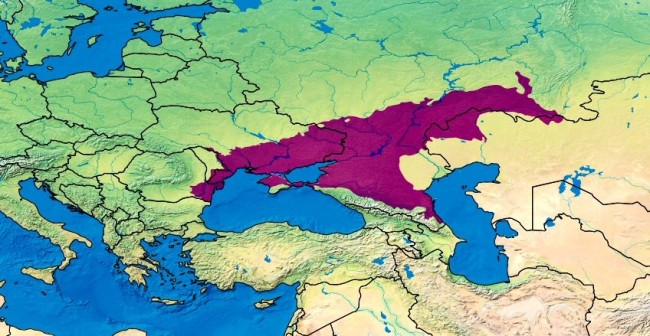
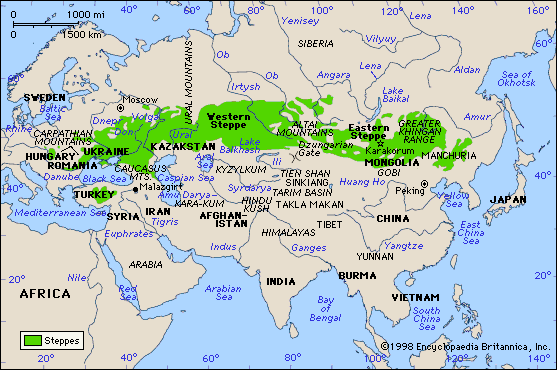
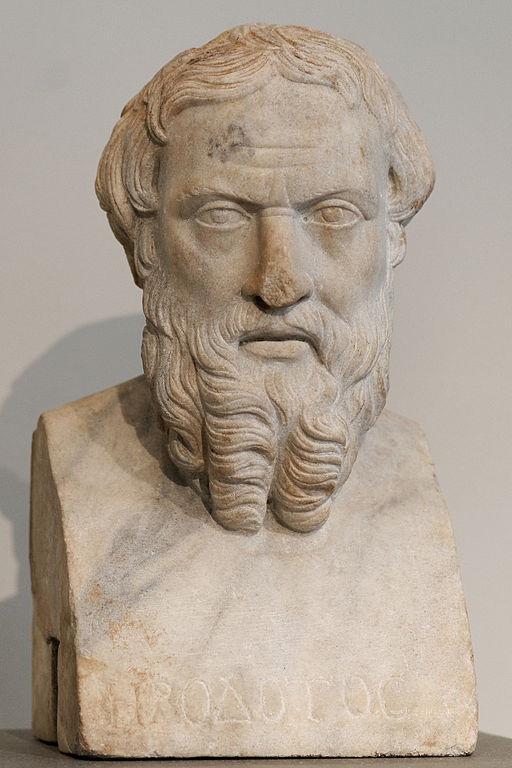

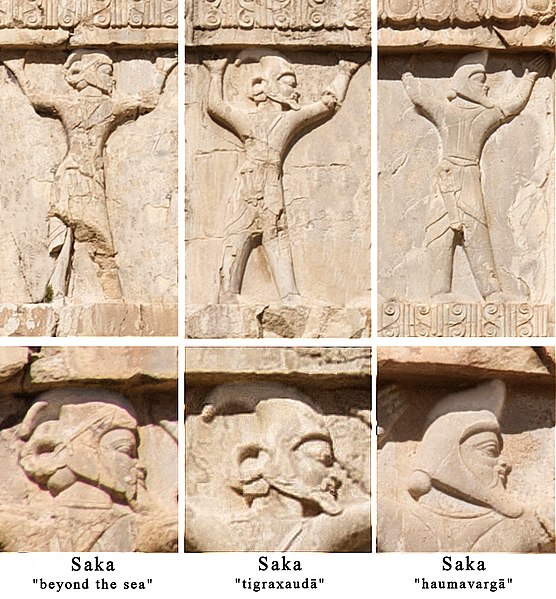
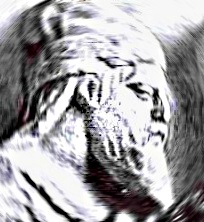
.png)
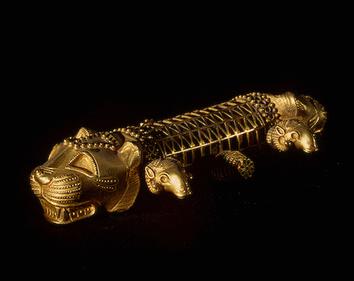
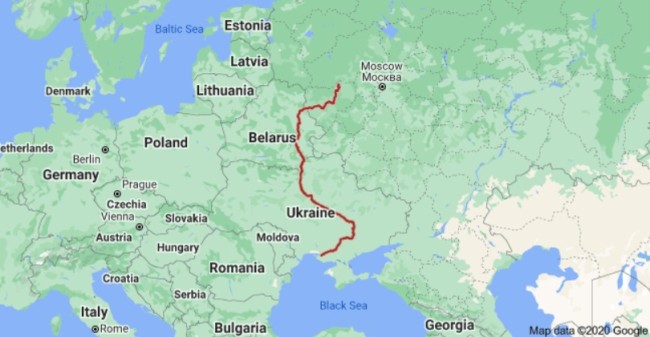
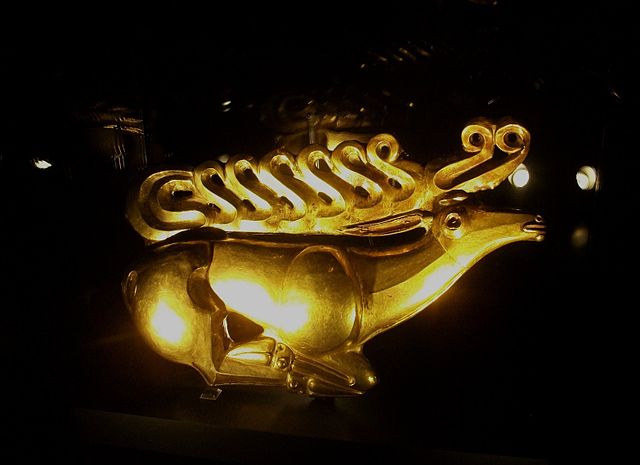
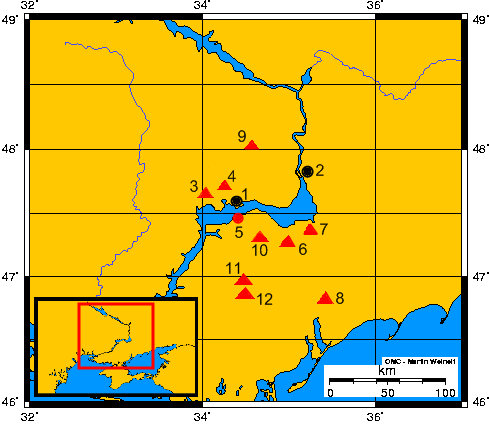
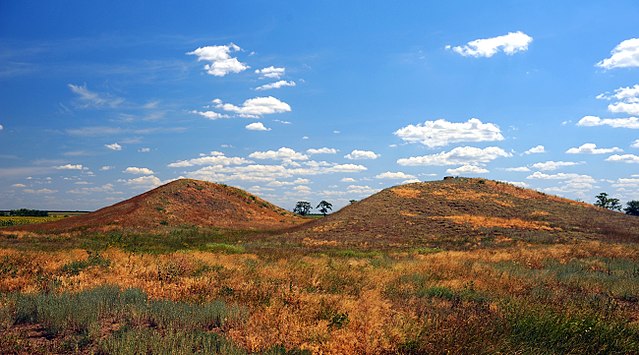
_(29608182661).jpg)


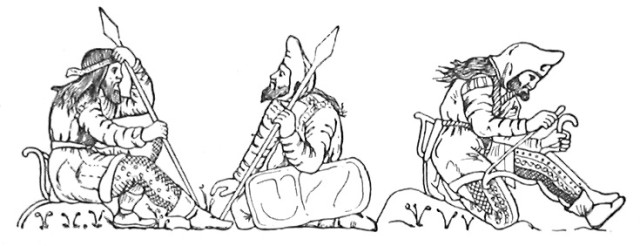

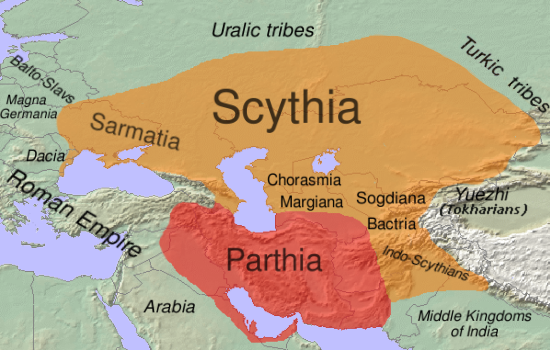
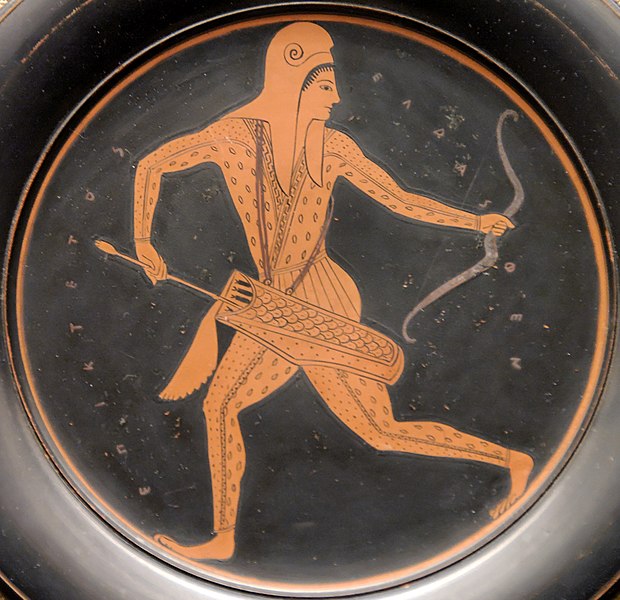
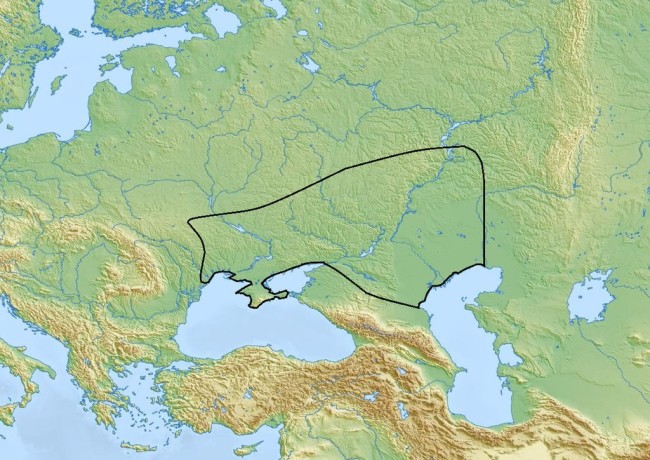
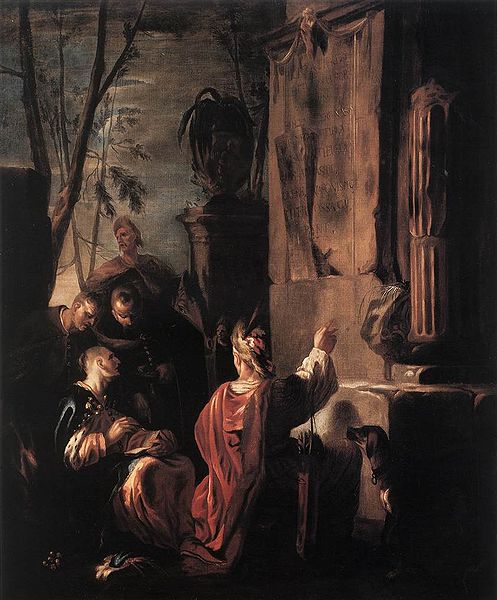

.jpg)